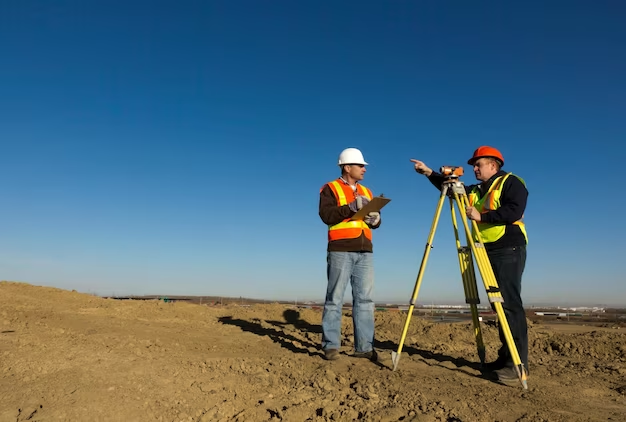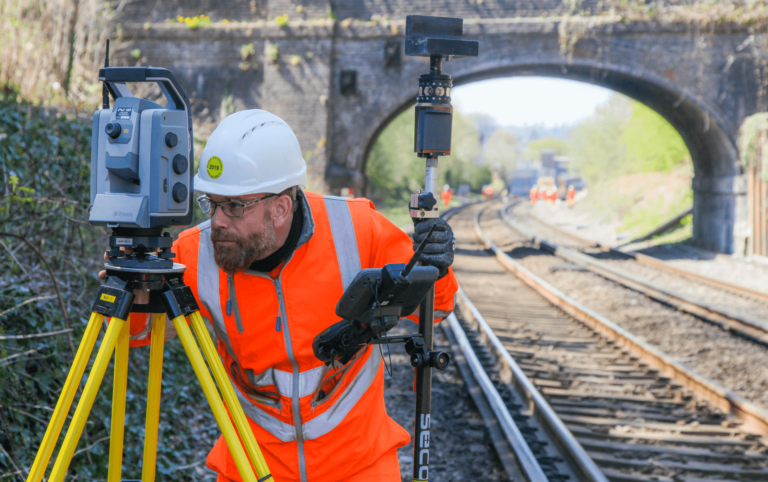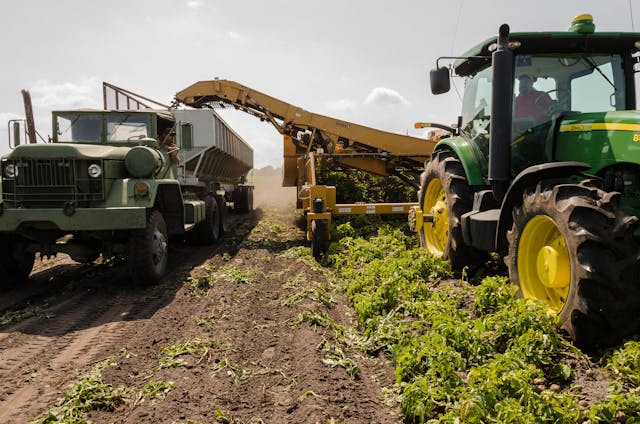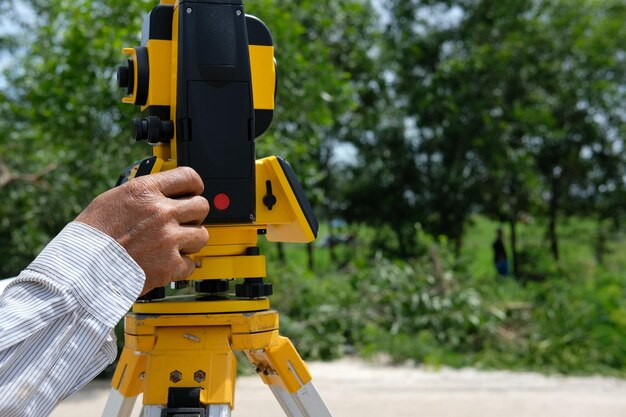The topographical survey is a crucial tool in both the geography and construction fields, serving numerous purposes across various industries. This comprehensive article explores the multifarious ways that topographical surveys are utilized, highlighting their importance and adaptability. From civil engineering endeavors to environmental stewardship initiatives, these surveys provide an essential foundation for informed decision-making and strategic planning.
For expert insights on optimizing your SEO strategy through quality backlinks, delve into this illuminating piece on What Types of Backlinks Should Companies Build? It provides invaluable guidance on building a robust backlink profile to elevate your online presence and drive organic traffic.
The Essence of Topographical Surveys

A topographical survey is an intricate process aimed at accurately mapping and documenting the surface features of a particular piece of land. It involves identifying and recording both natural and man-made elements within the designated area to generate a comprehensive three-dimensional representation of terrain. The importance of such surveys cannot be overstated as they offer immense value across numerous fields. Here are some essential components that make up a topographical survey:
Elevation Points
The measurement of elevation is a key component in conducting a topographical survey, as it pinpoints the distance above sea level at different points on land. To obtain this information with precision, specialized equipment – including Total Stations and Global Positioning Systems (GPS) – are used to gather what’s known as “elevation points.” The data that these measurements provide play an integral part in crafting precise topographic maps and comprehending the vertical structure of an area’s terrain.
| Location | Elevation (ft) |
| Point A | 450 |
| Point B | 520 |
| Point C | 390 |
| Point D | 600 |
Contours
Contours are lines that connect points of equal elevation on the land surface. They play a vital role in understanding the slope, relief, and shape of the terrain. Contour lines are typically drawn at regular intervals, known as contour intervals, and they help create contour maps that provide a clear visualization of the land’s topography.
| Contour Interval (ft) | Contour Lines |
| 10 | 400, 410, 420 |
| 20 | 440, 460, 480 |
| 50 | 520, 570, 620 |
Natural Features
The meticulous documentation of topographical surveys encompasses a wide range of natural features found on the land. These include:
- Trees: The mapping and quantity of trees are documented, which is crucial for both land development projects and environmental planning initiatives.
- Water Bodies: The identification and measurement of water bodies like lakes, rivers, ponds, and streams provide valuable information for hydrological studies as well as flood risk assessment.
- Hills and Valleys: The gathering of elevation data assists in pinpointing the peaks (hills) and troughs (valleys) within a terrain, which prove advantageous for geological assessments and land-use strategizing.
Man-made Structures
Aside from natural elements, topographical surveys also concentrate on human-made constructions within the scanned zone. These structures encompass:
- Buildings: Recording the location, size and height of buildings is essential for urban planning as well as architectural design and infrastructure development purposes.
- Roads and Bridges: Accurate documentation of roads, bridges, and other transportation infrastructure encompasses specific measurements and design layouts that play a pivotal role in the planning, maintenance, and growth endeavors pertaining to this sector.
Topographical Survey in Civil Engineering and Construction

Comprehending the usage of topographical survey is paramount in civil engineering and construction as it assists engineers to create infrastructure that seamlessly blends with the environment.
Site Planning
One of the primary applications of topographical surveys in civil engineering is site planning. This process involves selecting the optimal location for construction projects, taking into account various factors such as terrain, elevation, and soil composition. Here’s how topographical surveys play a crucial role in site planning:
- Terrain Analysis: The analysis of terrain involves conducting topographical surveys to obtain precise elevation measurements, which enable engineers to gain insight into the land’s contours. These findings are critical for recognizing potential obstacles and advantages that could emerge during construction projects.
- Stability Assessment: To evaluate stability, engineers rely on topographic maps to study the slopes and drainage patterns of the selected site. Additionally, they examine geological features to guarantee that any construction will be structurally sound and secure.
- Environmental Impact Assessment: Topographical surveys assist engineers in evaluating the environmental consequences of a building undertaking, such as pinpointing vulnerable zones like wetlands or animal habitats and devising ways to reduce disturbance.
- Accessibility and Grading: The utilization of topographical surveys to plan access roads and determine grading is crucial for ensuring the site’s accessibility. As a result, construction processes become more efficient.
Infrastructure Design
In the design phase of civil engineering projects, topographical surveys are instrumental in creating infrastructure that is not only functional but also environmentally sustainable. Here’s how topography influences infrastructure design:
- Roads and Bridges: Engineers use topographic data to design roadways and bridges that follow the natural contours of the land. This minimizes the need for extensive earthwork and ensures safe and efficient transportation routes.
- Buildings and Foundations: For constructing buildings and foundations, understanding the topography is crucial. The survey data helps engineers determine the most suitable location and orientation for structures, considering factors like drainage and stability.
- Drainage Systems: Proper drainage is essential to prevent issues like flooding. Topographical surveys provide insights into natural drainage patterns, allowing engineers to design effective drainage systems that mitigate the risk of water-related problems.
- Utility Placement: When installing utilities such as water and sewer lines, knowledge of the topography is critical. Engineers can plan the layout to optimize gravity flow and minimize the need for costly pumping systems.
Volume Calculations
Topographical surveys are indispensable for volume calculations, a critical aspect of construction projects. These calculations are essential for various purposes, including estimating material requirements and earthwork quantities. Here’s how topographic data is used for volume calculations:
- Material Quantities: Engineers use topographical survey data to calculate the volume of materials required for construction, such as concrete, asphalt, or fill material. This ensures accurate cost estimates and efficient procurement.
- Earthwork Quantities: For projects involving excavation or grading, topographical surveys help in determining the volume of earth that needs to be moved. This information is vital for scheduling and budgeting.
- Reservoir Capacity: In projects related to water resource management, such as reservoir construction, topographical surveys assist in calculating the storage capacity of the reservoir based on the natural topography of the area.
Topographical Survey in Urban Planning and Development
Urban planners heavily rely on how the topographical survey is used. It helps in designing cities and towns that are efficient, safe, and aesthetically pleasing.
Land Use Planning
One of the primary applications of topographical surveys in urban planning is identifying suitable areas for different types of land use, such as residential, commercial, and industrial development. Here’s how it works:
- Data Collection: Topographical surveys involve collecting precise data about the elevation, contours, and features of the land. This data is then used to create detailed topographic maps.
- Site Analysis: Urban planners analyze these maps to determine the best areas for various land uses. For instance, flat terrain might be ideal for residential neighborhoods, while areas with natural water bodies could be earmarked for parks and recreation.
- Optimizing Land Use: By considering the topographical data, planners can optimize land use to maximize efficiency and aesthetics. Steeper slopes might be better suited for green spaces, while flatter areas could accommodate commercial centers.
- Safety and Accessibility: Topographical surveys also help identify potential hazards, like flood-prone areas or unstable terrain, ensuring that development avoids risky locations and promotes safety.
Environmental Impact Assessment
Urban development often has a significant impact on the environment, including changes to the natural terrain and ecosystems. Topographical surveys are crucial for assessing these potential impacts:
- Baseline Data: Topographical surveys provide a baseline understanding of the natural landscape. This data helps in quantifying changes caused by development.
- Erosion and Drainage: By analyzing the terrain, planners can predict how changes like road construction or building foundations might affect erosion patterns and drainage. This information guides mitigation measures.
- Biodiversity: Understanding the topography aids in identifying ecologically sensitive areas that need protection. For instance, wetlands or wildlife habitats can be preserved with this knowledge.
- Sustainability: The data from topographical surveys informs sustainable design practices. For example, it helps determine optimal locations for rainwater harvesting or green infrastructure.
Transport Network Design
Efficient transportation is a cornerstone of urban planning, and topographical surveys are instrumental in designing road networks, public transportation systems, and pedestrian pathways:
- Route Selection: Topographical surveys help identify the most suitable routes for roads and public transit based on factors like gradient, elevation changes, and existing infrastructure.
- Pedestrian Access: Urban planners use topographical data to create accessible pedestrian pathways, minimizing steep slopes and obstacles for pedestrians.
- Drainage Planning: Proper drainage is vital for road networks. Topographical surveys inform drainage system designs to prevent flooding and ensure road longevity.
- Public Transport Stations: Planners locate public transport stations strategically by considering topographical factors, such as accessibility and minimal environmental disruption.
Topographical Survey in Environmental Management and Conservation
The role of topographical surveys in environmental management cannot be overstated. They are pivotal in understanding how landscapes change over time and in assessing the impact of human activities on the environment.
Flood Risk Assessment
Floods can have devastating effects on both the environment and human settlements. Topographical surveys are instrumental in assessing flood risk and developing effective mitigation strategies:
- Data Collection: Topographical surveys involve the collection of precise elevation and contour data. This information is crucial for understanding how water flows across the landscape.
- Identifying Flood-Prone Areas: Using topographic data, experts can identify low-lying areas and areas near rivers or lakes that are prone to flooding. This information is essential for urban planning and land-use decisions.
- Modeling Flood Scenarios: Topographical data is used to create flood models, allowing experts to simulate different flood scenarios. This helps in predicting the extent and impact of potential floods.
- Mitigation Planning: Armed with accurate topographic information, environmental managers and urban planners can develop mitigation strategies such as constructing flood barriers, improving drainage systems, and implementing zoning regulations to limit development in high-risk areas.
Erosion Control
Soil erosion is a significant environmental concern, leading to loss of fertile topsoil and habitat degradation. Topographical surveys are indispensable for identifying erosion-prone areas and implementing preventive measures:
- Terrain Analysis: Topographical surveys provide detailed information about slopes, gradients, and soil types. This data is critical for identifying areas susceptible to erosion.
- Vegetation Planning: By understanding the topography, environmental managers can plan the strategic planting of vegetation to stabilize soil and prevent erosion.
- Erosion Control Structures: The data from topographical surveys aids in the design and placement of erosion control structures, such as terraces, check dams, and retaining walls.
- Monitoring and Maintenance: Topographical surveys also play a role in ongoing erosion control efforts by monitoring changes in the landscape and assessing the effectiveness of implemented measures.
Habitat Mapping
Conservation of biodiversity and wildlife habitats is a cornerstone of environmental management. Topographical surveys are used in habitat mapping to chart and protect these critical areas:
- Mapping Key Habitats: Topographic data helps identify and map important habitats, including wetlands, forests, and riparian zones, which are essential for various species.
- Wildlife Corridor Planning: Understanding the terrain enables planners to designate wildlife corridors that connect fragmented habitats, facilitating the movement of animals and maintaining genetic diversity.
- Conservation Zoning: Topographical surveys aid in establishing conservation zones where human activities are limited or regulated to protect sensitive habitats and preserve biodiversity.
- Climate Change Adaptation: As landscapes change due to climate change, topographical surveys help track these shifts and adapt conservation strategies accordingly.
Topographical Survey in Agriculture and Land Management
In agriculture, understanding how the topographical survey is used helps in maximizing land productivity while minimizing environmental impacts.
Irrigation Planning
Efficient irrigation is vital for successful agriculture, and topographical surveys play a pivotal role in designing irrigation systems that optimize water usage and conform to the land’s topography:
- Data Collection: Topographical surveys involve collecting precise elevation and contour data. This data is essential for understanding the natural slopes and drainage patterns of the land.
- Identifying Suitable Irrigation Areas: By analyzing the topographic data, experts can determine the best areas for irrigation, considering factors such as slope, elevation, and proximity to water sources.
- Designing Irrigation Systems: The topographical information guides the design of irrigation systems, including the layout of channels, pipes, and irrigation methods. Systems can be tailored to the terrain, ensuring efficient water distribution.
- Minimizing Water Waste: Using topographic data, landowners can avoid areas with excessive slopes that might lead to water runoff, preventing water wastage and ensuring even distribution to crops.
Soil Conservation
Preventing soil erosion is a critical aspect of sustainable land management. Topographical surveys help identify erosion-prone areas and inform strategies for soil conservation:
- Terrain Analysis: Topographical surveys provide detailed information about slopes and contours, aiding in the identification of areas susceptible to erosion.
- Erosion Control Measures: Armed with topographic data, land managers can implement erosion control measures such as contour farming, terracing, and planting cover crops strategically.
- Minimizing Sediment Runoff: Understanding the land’s topography allows for the construction of sediment basins and retention ponds at suitable locations to capture soil runoff and prevent it from entering water bodies.
- Tailored Strategies: Topographic surveys enable the development of customized erosion control strategies that align with the land’s unique characteristics, promoting effective soil conservation.
Crop Planning
Selecting the right crops for cultivation is essential for agricultural success. Topographical surveys aid in crop planning by considering the terrain and elevation:
- Land Suitability Assessment: Topographic data is used to assess the suitability of different areas for specific crops. For example, crops sensitive to waterlogging are not planted in low-lying areas.
- Microclimates: Topographical surveys help identify microclimates on the land, which can influence crop selection. South-facing slopes may be warmer, making them suitable for certain crops.
- Optimal Planting Patterns: Knowledge of the land’s topography enables farmers to plan crop rows and contours effectively, optimizing sun exposure and water drainage.
- Crop Rotation: Topographic data assists in planning crop rotation by understanding which areas are best suited for specific crops, helping to maintain soil health.
Conclusion
The myriad ways in which the topographical survey is used highlight its indispensability in a wide range of fields. From aiding in the design of our cities and infrastructure to playing a vital role in environmental conservation, topographical surveys are fundamental in shaping a sustainable and well-planned world. Understanding how the topographical survey is used is essential for professionals across numerous industries, and its significance continues to grow in our increasingly data-driven society.
FAQ
Q: Why is a topographical survey important in land purchasing?
A: When purchasing land, a topographical survey provides a detailed understanding of the terrain, highlighting any potential issues like flood risks or steep slopes. It ensures informed decision-making and future planning.
Q: Can topographical surveys help in historical research?
A: Absolutely! Topographical surveys can reveal historical land use patterns, ancient structures, and changes in the landscape over time, aiding in archaeological and historical studies.
Q: How often should a topographical survey be updated?
A: The frequency depends on the area’s rate of development and environmental changes. In rapidly changing areas, surveys might be needed every few years, while in more stable regions, longer intervals may be sufficient.
Q: Are topographical surveys essential for small-scale projects?
A: Yes, even for small-scale projects, understanding how the topographical survey is used is critical. It ensures that any development, no matter the size, is in harmony with the land’s natural features.
Q: How has technology impacted topographical surveys?
A: Technological advancements, such as aerial photography, LiDAR, and GPS, have significantly enhanced the accuracy and efficiency of topographical surveys, allowing for more detailed and quicker data collection.









+ There are no comments
Add yours